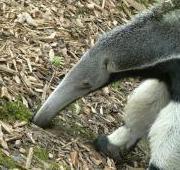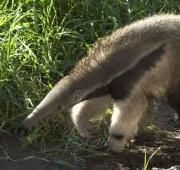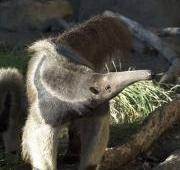 Anteaters are found throughout the Southern Hemisphere but are more common in Africa, Asia and parts of Australia. The name anteater is given to any medium size insect eating mammal such as the giant anteater, the collared anteater, the silky anteater, the spiny anteater and the echidna which is native to Australia.
Anteaters are found throughout the Southern Hemisphere but are more common in Africa, Asia and parts of Australia. The name anteater is given to any medium size insect eating mammal such as the giant anteater, the collared anteater, the silky anteater, the spiny anteater and the echidna which is native to Australia. The average anteater is nearly a meter in length although some species can be bigger (like the giant anteater that gets to nearly 2m long), where others can be smaller (like the silky anteater that only grows to around 30 cm).
The average anteater is nearly a meter in length although some species can be bigger (like the giant anteater that gets to nearly 2m long), where others can be smaller (like the silky anteater that only grows to around 30 cm).


The giant anteater has coarse hair which can be gray or brown in colour, with a white-banded black stripe running along the giant anteater\'s body. The giant anteater also has a long, bushy tail which can be two to three feet long.
The giant anteater\'s front feet have large claws, which are curled under when the giant anteater walks. Although the giant anteater has poor vision the giant anteater is able to detect food using its keen sense of smell.
Despite their soft appearance, anteaters are more than ready to defend themselves against predators and have been known to become very aggressive towards them. Anteaters primarily use their powerful legs and long claws to warn off larger animals including cougars, jaguars and even humans.
Female anteaters give birth to a single baby after a gestation period of around 6 months. The baby anteaters spend their first couple of years with their mother and usually become independent when she is pregnant again. In order to remain safe from waiting predators on the ground, baby anteaters spend much of their nursing period clinging to the back of their mother.
Today, the giant anteater population numbers are declining mainly due to habitat loss and over-hunting by humans. Although considered vulnerable animals, the giant anteater is not thought to be in immediate danger of extinction but recent reports indicate that there may be less than 5,000 giant anteater individuals left in the wild.

